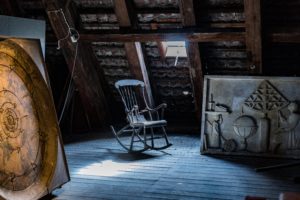 Because mold is such a durable organism, keeping up with regular spot checks and mold inspections around your home is vital. Mold can easily grow and spread before we even know it’s in our house, because it typically grows in areas that aren’t in our regular line of sight.
Because mold is such a durable organism, keeping up with regular spot checks and mold inspections around your home is vital. Mold can easily grow and spread before we even know it’s in our house, because it typically grows in areas that aren’t in our regular line of sight.
Preventing mold can be tough, but it’s possible. Here are a few tips on what to look for if you suspect you might have mold growing in your home.
Mold Inspections
Attics and Basements
The most common places for mold to grow are your attic and your basement. You may not think to check for mold growth in your attic because it is typically warm and dry. However, due to the seasonal (and even daily) temperature swings, humidity has plenty of opportunity to build up in your attic, providing the moisture mold needs to grow.
Keep your attic reasonably clean. No, you don’t have to dust and vacuum inside your attic on a weekly basis but make sure you regularly give it a once-over to prevent large amounts of dirt and debris from accumulating.
Water can leak from your roof when it rains, and moisture can get stuck between the shingles and the ceiling. This can lead to mold growth, but it’s not often visible to the naked eye.
This is where your nose comes in. Mold has a very musty odor, and if you smell it in your attic, there’s a good chance you have mold. Also, pay attention to the feel of the room. Does it feel more humid? Can you see signs of condensation? These are also good signs you might have some mold growing in your attic.
The basement is another common area for mold, due to its propensity for higher moisture levels. It’s also an area many people store items that are particularly susceptible to mold, including cardboard, books, papers, and clothing.
Keep these items away from the walls or sealed in airtight plastic containers. If the mold doesn’t have an easy food source, it won’t be able to visit your home as an unwanted guest.
Gutters and Pipes
If your gutters and pipes become clogged, water can easily make its way back inside your home, providing another opportunity for mold growth.
Regularly check your gutters and pipes for a build-up of dirt and debris, and inspect them after any particularly windy days or big storms. While the task itself is a bit of a nuisance, it’s one you can do on your own without a professional. It won’t cost you any money, and it will help you stay on top of any potential problems.
Inadequate Ventilation
Ventilation has a direct correlation with mold growth. If your house has improper air flow, the varying temperatures can lead to condensation build-up inside the vents.
This is a very common area for people to ignore. Give it the smell test—it’s often a dead giveaway that you’ve got some mold colonies making a home in your air ducts.
It’s also important to make sure the vents in your home actually lead outside. Bathroom vents often lead to other areas of the house, like the attic or a storage room, and all that does is move moisture from one room to another. Vents need to lead to outdoors. At the very least, make sure to open a nearby window when you take a shower or bath. This will help alleviate some of the moisture build-up.
Contacting the Professionals
Mold removal can be an overwhelming project to take on unassisted, but that’s where we come in. Our team of certified professionals is willing to answer any questions you might have and help you come up with an action plan. Contact us today!







